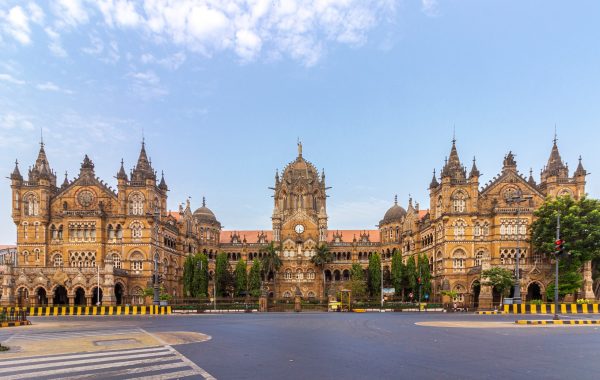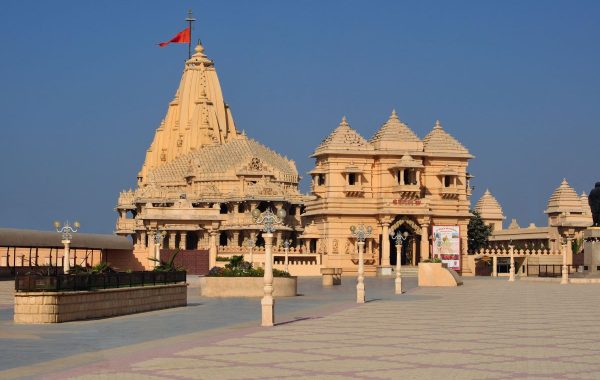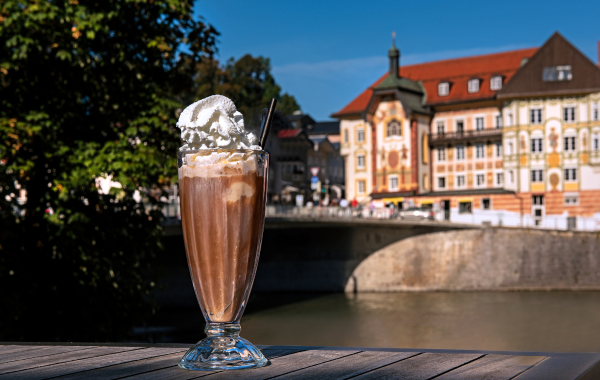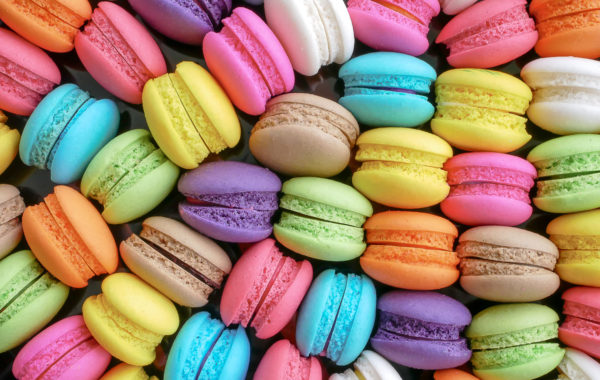Throughout the nation, harvest festivals are identified by diverse regional names and customs. Despite these variations, a shared element unites them all—delicious food.
As the winter chill envelops the Indian subcontinent, vibrant celebrations herald the arrival of harvest festivals such as Lohri, Pongal, Makar Sankranti, and Uttarayan. These festivals not only mark the bountiful harvest but also showcase the diverse cultural tapestry of India. A significant aspect of these celebrations is the culinary delight that brings families and communities together.
Lohri

Lohri is celebrated with great enthusiasm in Punjab and is primarily linked to the winter crop harvest, especially wheat, in the region. Festivities include gathering around an evening bonfire, where people offer prayers to the fire god, Agni, all the while singing traditional folk songs, dancing, and eating traditional food.
Sarson da Saag and Makki di Roti:
A quintessential Lohri dish, Sarson da Saag, a mustard greens curry, is served with Makki di Roti, unleavened cornflat bread. The robust flavors of mustard and the rustic texture of the cornflat bread make this combination a winter favorite.
Where to Eat: Although you have the option to order Sarson ka Saag from a Punjabi restaurant in your local area, if you find yourself in the capital city of Punjab, Chandigarh, there are renowned establishments to relish Makke Di Roti and Sarso Da Saag. Pal Dhaba is a popular choice known for its delectable traditional Punjabi cuisine. Another highly recommended venue is Gopal’s, where you can indulge in the authentic flavors of this regional delicacy.
Gajak, Til Ladoos, and Pinni
Sweet delights like Til Ladoos, a blend of sesame seeds, jaggery, dry fruits, and coconut; Punjabi Pinni, a roasted sweet crafted from wheat flour and almond slivers, enriched with pure ghee, edible gum; and Gajak—a sesame seed and jaggery bar, are distributed among family and friends.
Where to Eat: Gulab restaurant, renowned for its gajak and chikki, can be found in Sector 35-D, Chandigarh, as well as in Sector 9, Panchkula. Another notable option is Gopal Sweets, situated in Sector 35 and Sector 8, Chandigarh.
Makar Sankranti

Makar Sankranti is observed nationwide, featuring diverse regional variations in cuisine that align with the distinct religious and seasonal significance attributed to it in various states. The festival usually falls on the 14th or 15th of January every year.
Puran Poli (Maharashtra)
A beloved Maharashtrian delight that elevates the charm of Makar Sankranti is Puran Poli. This sweet flatbread is filled with a delightful mixture of sweet and crumbly moong. Notably, this renowned breakfast dish is also crafted during Diwali and Naraka Chaturdashi celebrations.
Where to Eat: Bhasker’s Puranpoli Ghar In Mumbai Serves 26 Varieties Of Puran Poli.
Swati Snacks is also renowned for their delicious puran polis.
Til Ladoo (Maharashtra)
Til ladoo stands as a delectable Sankranti tradition, offering bite-sized delights crafted from the comforting blend of sesame seeds and jaggery. Both sesame and jaggery hold significant importance in Sankranti celebrations. To the extent that Maharashtrians commonly exchange greetings with “til-gul ghyaa, aani goad-goad bolaa” (Translation: eat til and jaggery and speak well) while sharing til ladoos, embodying the festive spirit.
Patishapta (West Bengal)
Patishapta, a delectable treat, is crafted from a blend of semolina, rice flour, and all-purpose flour. These crepes are generously filled with either khoya and sugar or a mixture of grated coconut and patali gur, then pan-fried in ghee to achieve a delightful crispy exterior.
Dudh Puli (West Bengal)
Puli is essentially a steamed sweet delicacy, featuring a rice flour coating and a delectable filling of jaggery and coconut. You can relish steamed puli on its own or immerse it in richened sweet milk for a delightful variation known as dudh puli. Resembling modak or gujiya in appearance, puli offers a sweet treat. While some opt for sugar to sweeten both the milk and the filling, a traditional dudh puli recipe incorporates fresh jaggery for an authentic flavor.

Also Read: The 6 Best Winter Foods To Try in Kolkata
Gokul Pithe (West Bengal)
Gokul Pithe, in contrast to the steamed puli, is fried and immersed in sugar syrup. Featuring a filling of jaggery and coconut, it boasts a soft texture that delicately melts in the mouth with every bite.
Nolen Gurer Payesh (West Bengal)
The enduring love between Bengalis and payesh requires no introduction. Payesh, akin to a thickened rice and milk pudding infused with aromatic spices, shares a close kinship with kheer. What makes Poush Sankranti payesh exceptionally delightful is the use of date palm jaggery or khejur gur, a sweetener exclusive to the winter months.
Where To Eat: At Balaram Mullick & Radharaman Mullick (multiple outlets in the city) and at Nobin Chandra Das & Sons in Shobhabazar, you can relish freshly cooked patishapta straight from the griddle or bring home an assortment of pithe, including the sesame-crusted til’er pithe, the soft moog daal’er pithe, or the perennially beloved gokul pithe with its sugary exterior.
Makara Chaula (Odisha)
Makara Chaula, a delightful concoction of freshly harvested rice, jaggery, milk, chhena, banana, and sugarcane, graces the tables of nearly every Odia household during Sankranti. After the mixture is offered to the deity, it becomes a gesture of sharing and is distributed among everyone.
Where To Eat: ‘Makar Chaula,’ a distinctive dish made with freshly harvested raw rice, is also presented to Lord Jagannath, Lord Balabhadra, Devi Subhadra, and the four Digapalas at the Jagannath Temple. The Alamchandi temple, situated in Kumbharpada, contributes five ‘Makara Tadas’ to the temple the night before, specifically for the special ‘Makara Chaula’ prasad for the deities. This unique offering is then paraded around the temple accompanied by the resonating beats of gongs.
Khichdi (Bihar)
Khichdi, a delightful blend of moong beans, rice, and a medley of rustic spices, transcends its role as a mere comfort food for Indians. In Bihar, people prepare and relish delicious khichdi on Sankranti, delighting in its flavors enhanced by a generous dollop of ghee. This hearty dish is commonly paired with fried veggies and chutney to create a wholesome and satisfying meal.
Uttarayan

The coming of the harvest season is celebrated on the winter equinox when the sun moves from the Tropic of Capricorn (Dakshinayan) to the Tropic of Cancer (Uttarayan), giving the festival its name in Gujarat—Uttarayan
Undhiyu (Gujarat)
A Gujarat specialty prepared during Uttarayan, this dish features a delightful medley of vegetables cooked in an assortment of freshly-prepared spices. Derived from the term ‘undhu,’ meaning upside down, this dish follows a traditional slow-cooking method using earthen pots placed upside down in a fire pit. Undhiyu comes in various versions, with surti undhiyu, believed to originate in Surat, standing out as the most popular. The dish incorporates vegetables such as eggplant, potatoes, yam, green peas, raw bananas, and beans, all cooked in a rich blend of freshly-ground spices, accompanied by dumplings made from fenugreek leaves.
Where To Eat: Vishalla, a renowned outdoor restaurant locaded in Vasna Sarkhej Road , provides a charming and traditional dining ambiance. Its claim to fame lies in the authentic Gujarati thali, where Undhiyu stands out as a prominent dish. For another delightful taste of Undhiyo, you can explore Agashiye, situated within the House of MG.
Pongal

In the southern states of Tamil Nadu, Telangana, and Andhra Pradesh, a four-day harvest festival is dedicated to celebrating rice. Named after the act of boiling over, the festival signifies the preparation of a special dish made from freshly harvested rice boiled in milk and jaggery. The ritualistic cooking of this dish involves allowing it to boil over, symbolizing a harbinger of abundance. The freshly made pongal is initially offered to the gods, marking the commencement of the festivities, and subsequently shared among community members and domestic cattle.
Sakkar Pongal and Ven Pongal (Tamil Nadu, Andhra Pradesh, Telengana)
Sakkar Pongal, a divine creation, combines rice, moong dal, and jaggery with ample quantities of ghee and dry fruits, resulting in a luscious dessert. Luxuriously rich and creamy, this delicacy practically melts in your mouth, adding to the festive joy. Ven Pongal, the savory counterpart of Pongal, shares the same foundation of rice and moong dal. Infused with generous doses of freshly-ground pepper and cumin, this aromatic one-pot delicacy strikes a harmonious balance between flavor and health.
Where To Eat: Not only does Mathsya excel in serving top-notch Udipi cuisine, but it also delights patrons with its delicious Pongal. If you’re in Chennai, don’t miss the iconic ven pongal at Welcome Hotel, which is widely favored for takeaway or delivery. At Murugan Idly Shop, their Pongal, enriched with ghee and generously garnished with cashews, is sure to capture your culinary affection.
As the week unfolds, households across India will be bustling with preparations for these harvest festivals. Each festival brings its unique culinary delights, reflecting the cultural diversity and agricultural practices of different regions. Whether it’s the bonfires of Lohri, the savory Pongal dishes, or the sweet treats of Makar Sankranti, these festivals offer a glimpse into the rich tapestry of Indian traditions and the delightful feasts that accompany them.
For latest travel news and updates, food and drink journeys, restaurant features, and more, like us on Facebook or follow us on Instagram. Read more on Travel and Food Network
Trending on TFN
Long Weekends 2024: You Can Plan 16 Mini Vacations This Year






















